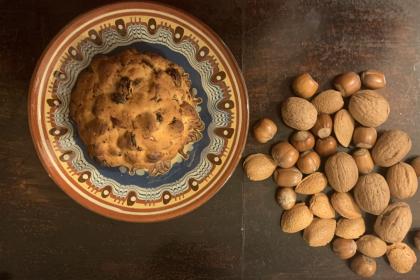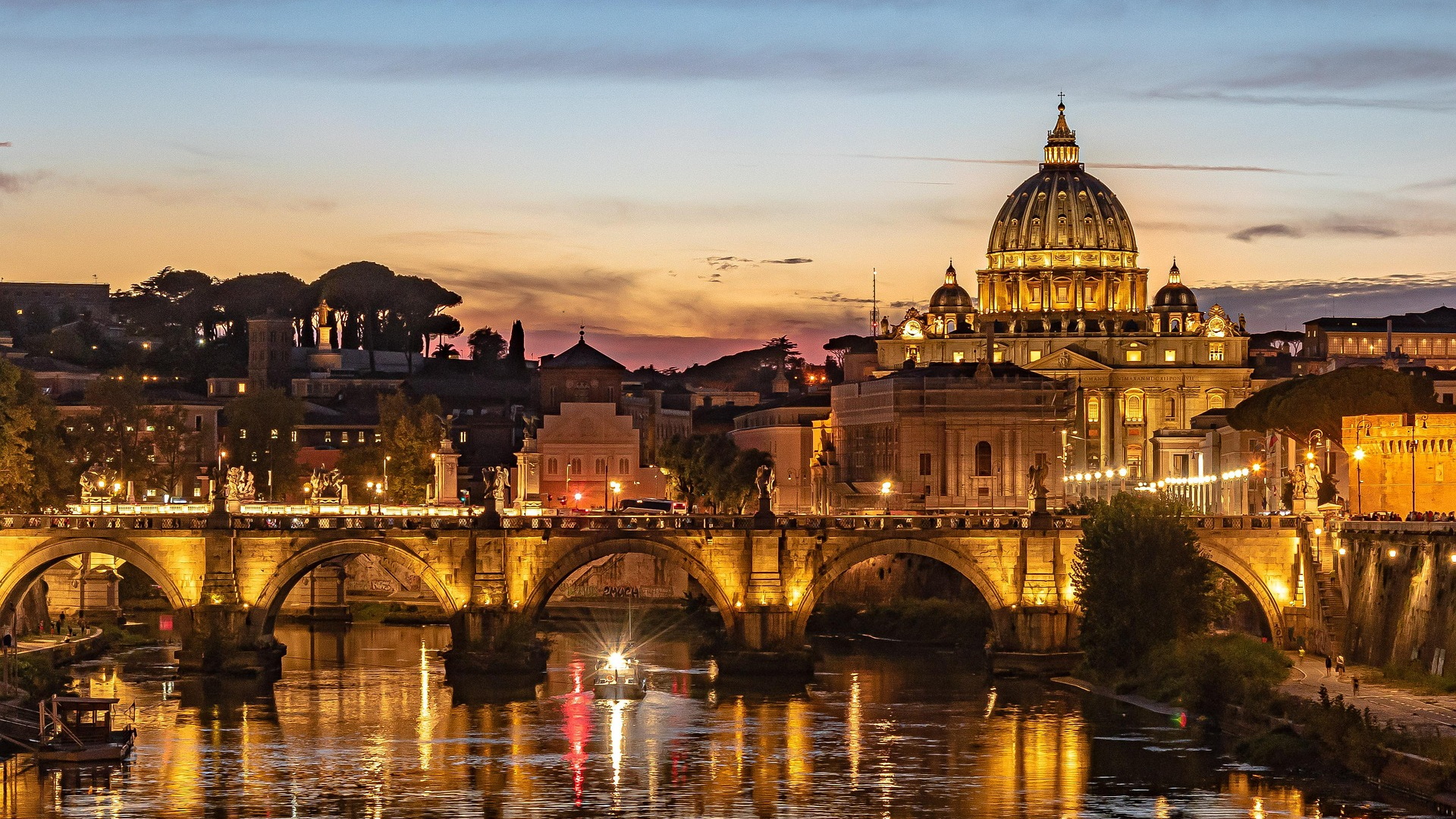
In addition to its monuments, palaces and churches, a city is also made up of the memories it evokes and the life that passes through it. A daily life that, in Rome, has always been marked by rites, holidays, anniversaries, celebrations: a full program of fixed events which, with their load of traditions, represented a (religious or civil) occasion for reflecting, meeting, sharing and having fun, season after season.
If some of them have not resisted the oblivion of time or have lost part of that sense of perfect wonder that they used to give to the Romans and to the many visitors of the city, others are still alive and kicking, even richer today than in the past. And some others, even if born in more recent years, are already part of the modern and contemporary “traditions” of the city.
To fully experience Rome and immerse yourself in its history, month by month we will present you some of the special days and moments of the city, the past and present one – the most heartfelt or awaited events, or even simply the most curious ones.
-
St. Barbara, 4 December
-
The Feast of the Immaculate Conception, 8 December
-
The cottìo and Christmas Eve, 23-24 December
-
Christmas, 25 December
-
St. Sylvester and New Year’s Eve, 31 December
St. Barbara, 4 December
Although her authenticity is highly questionable, the vivid legend about the saint of Nicomedia – the tortures she underwent and her execution by beheading performed by her father, who was then promptly struck dead by divine lightning – granted her fame and notoriety as early as the 6th-7th centuries. Her first depiction is perhaps in Rome, in a fresco in Santa Maria Antiqua, and both the oratory attached to the church of San Gregorio al Celio and the church of Santa Barbara dei Librai also have remote origins. But it is above all because of the many patronages that have flourished in connection with her story that young Barbara became so popular. The list includes, in particular, the professions most exposed to sudden risks and dangers, to fire and explosions: miners, artillerymen, bomb squads, firefighters and sailors, therefore, who organize parades, ceremonies and special events every 4 December, on the feast of the saint. In 16th-century Rome devotees of St. Barbara were inevitably the forerunners of the modern artillerymen, that is, the bombardiers in charge of the defense of Castel Sant’Angelo. At their own expense, they restructured one of the chapels in the church of Santa Maria in Traspontina, dedicating it to their patroness and decorating its walls with astonishing stucco thrusters, mortars, cannons, howitzers, balls, bullets and barrels of gunpowder. Organized into a confraternity since 1594, the papal bombardiers enjoyed a number of privileges and exemptions – including the possibility of releasing a condemned prisoner twice a year, on 29 September, for the feast of St. Michael the Archangel, and precisely on 4 December.
The Feast of the Immaculate Conception, 8 December
It has been an official holiday since 1854, when Pius IX defined as a Roman Catholic dogma an ancient Christian tradition – the spotless conception of the Virgin Mary, the only creature kept free from all stain of original sin. A number of churches dedicated to the Immaculate Conception already existed in Rome, for example the church of the Capuchins on Via Veneto and the 18th-century chapel of the Casina di Raffaello, but on that occasion it was decided to erect a special monument. Raised in front of the Spanish Embassy to the Holy See, as a tribute to the nation that had expended the most effort in defining the dogma, the Column of the Immaculate Conception was thus inaugurated on 8 December 1857, in Piazza Mignanelli, close to the Spanish Steps and almost in axis with the Fountain of the Barcaccia. Right at the foot of the column, on the top of which stands the bronze statue of Our Lady, takes place that religious and folkloric ceremony that, since 1953, has seen the extraordinary participation of the pope: the floral tribute offered every 8 December to the Blessed Virgin. Opening the day are the firefighters who, in memory of their 220 colleagues who erected the monument, climb their ladders at first light to give Mary a garland of flowers. The pontiff’s visit is usually in the afternoon: the event draws an immense crowd of onlookers and devotees, many of whom in turn offer floral tributes filling the base of the monument. But 8 December is also one of the most anticipated holidays because it traditionally opens the door to Christmas time, with the lightings on Via del Corso and the Christmas trees in the most iconic city squares.
The cottìo and Christmas Eve, 23-24 December
A strictly “lean” menu, that is with no meat, as imposed by the precepts of the Church, based on eels, marinated small fish, fish broth, spaghetti with anchovies or with tuna sauce, and salt cod with pine nuts and raisins, interspersed with batter-fried apples and broccoli: in old Rome, Christmas Eve dinner was one of the most anticipated culinary events on the religious calendar. The first act of the Eve, however, was a colorful open-air event that, on the night of 23 December, brought together nobles, common people and foreign travelers among the fish market stalls. The tradition of the Christmas cottìo, the wholesale sale of fish with prices set by auction, had started at the Portico di Ottavia, in the square facing the church of Sant’Angelo in Pescheria. It was here that, from the 12th century until the early 19th century, fish of all types and sizes were sold – including the ever-present rays for the famous minestra d’arzilla with broccoli. Laws and customs governed the auction, creating a suggestive atmosphere filled which weird and uncommon words: slang terms such as “a gazzimme” (half-and-half), understood only by sellers and buyers, including the cooks of the great Roman families who carefully chose the ingredients for the dinner party. Having survived the relocation of the market first to Via di San Teodoro, close to the Circus Maximus, and then from 1927 to the general markets on the Via Ostiense, the custom continued to enliven Christmas Eve until the mid-20th century, with lots of fried fish offered to all participants, and in recent years has been revived by a few isolated events. Still alive today, on the contrary, is the tradition of the Christmas dinner featuring fishes and seasonal vegetables.
Christmas, 25 December
The nativity scene adorning Bernini’s colonnade at St. Peter’s, the Urbi et Orbi message pronounced by the pontiff from the Loggia delle Benedizioni, but also the Christmas market around the Baroque fountains in Piazza Navona or the steaming cappelletti on the table: between sacred and profane customs, Christmas in Rome always has a particularly solemn note. Because of the presence of the pontiff, certainly, but also because of its ancestral connection to the city. The first certain mention of the Nativity of Christ with the date of 25 December dates back to the mid-4th century, in a sort of illustrated calendar drawn up for a Roman aristocrat. But even the choice of the date would be affected by celebrations and rituals linked to the pagan world and the winter solstice: the banquets and exchanges of gifts that characterized the Saturnalia – the most joyous festivities of the Roman calendar – and the feast of “Dies natalis Solis Invicti”, dedicated to the god Sun and celebrated precisely on 25 December. In honor of the sun, ancient Romans already ate a golden, round “bread”, the pangiallo, which was for centuries unfailing on the Christmas table in the Rome of the Popes, along with mostaccioli and Roman torrone. Once dinner and the classic tombolata (the Italian version of Bingo) were over, Romans flocked to midnight mass, which kicks off the Christmas celebrations. Perhaps the most famous and evocative mass is today is the one in St. Peter’s Basilica, but the primacy long belonged to St. Mary Major. Called “ad Praesepe” because of the relics of the “holy cradle”, the basilica also preserves the first modern nativity scene in history, sculpted by Arnolfo Di Cambio in the late 13th century. Until the early 20th century, extraordinary nativity scenes could be visited not only in churches (for example, in San Marcello al Corso or the basilica of Santi Cosma e Damiano) but also in the homes of wealthy Roman families, who opened their doors to all. But the nativity scene par excellence has always been that of the Aracoeli, whose Baby Jesus, the “pupo”, has always been the object of a special veneration, tinged with tenderness and familiarity. A veneration that did not cease even after the original was stolen and thus replaced by a copy in the early 1990s.
St. Sylvester and New Year’s Eve, 31 December
According to the liturgical calendar, the task of watching over the last day of the year is entrusted to the pontiff who led the Church from 314 until his death, which occurred precisely on 31 December 335: 21 years coinciding with Constantine the Great’s empire and marking the transition from pagan to Christian Rome, from the old to the new world. During his papacy, several of the magnificent Roman basilicas were built by Constantine, but popular devotion also attributed Sylvester miracles and extraordinary feats, recounted in the frescoes of the Santi Quattro Coronati complex. The only religious elements accompanying the end of the year, however, are the mass celebrated in the church of San Silvestro in Capite – where according to tradition Sylvester rests – and the solemn evening Te Deum service presided over by the pontiff. Far more numerous are the secular “rituals” of New Year’s Eve, from kissing under the mistletoe to the custom of eating lentils or wearing something red, a color considered auspicious even in imperial Rome. But in Rome, New Year’s Eve is above all a great street party, to be spent, after the unavoidable dinner, toasting to the New Year among the evocative scenery offered by the city or on the terraces of the Janiculum or the Pincio, among the best vantage points to get lost in the spectacle of the fireworks. Among the many events and shows organized by the city, however, music plays a key role: from the traditional “concertone” at the Circus Maximus to the augural concert of classical music in the Quirinal Square, in the presence of the institutions, and the many events in the halls and historic Roman churches.
January in Rome. Key dates and events (today as in the past)
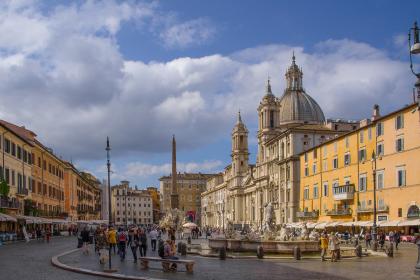
February in Rome. Key dates and events (today as in the past)
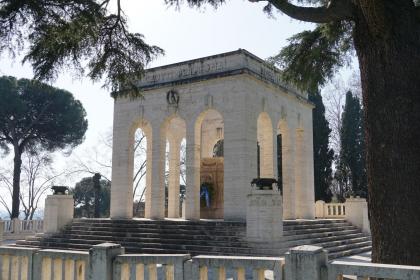
Church of Santa Barbara dei Librai
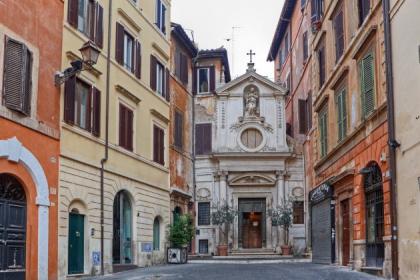
 Condividi
Condividi
Via Vittorio Veneto
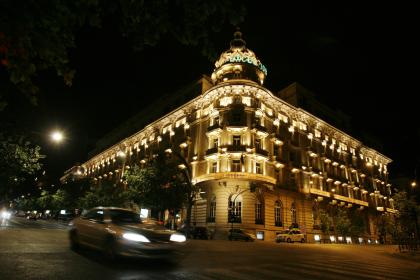
 Condividi
Condividi
Piazza di Spagna and Piazza San Pietro
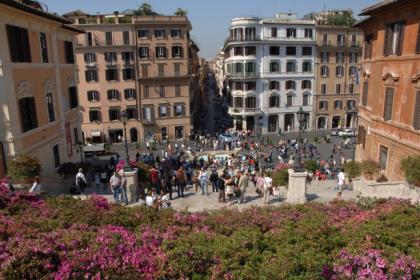
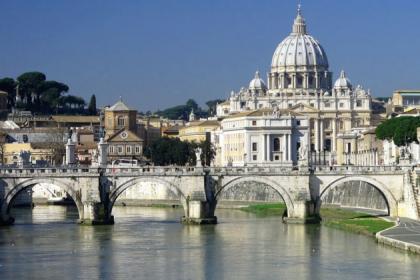
 Condividi
Condividi
The Column of the Immaculate
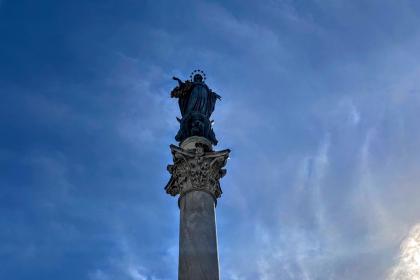
 Condividi
Condividi
Piazza Venezia
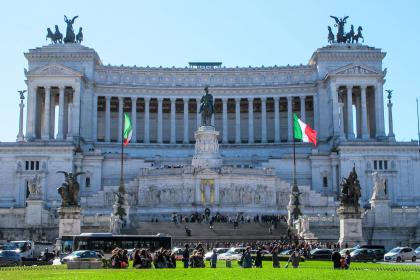
 Condividi
Condividi
The old Jewish Quarter
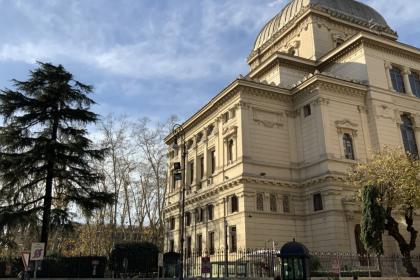
 Condividi
Condividi
Christmas Time in Roman Cuisine
Il Natale è un’occasione per riunirsi in famiglia e condividere i piaceri della tavola
Bernini's locations
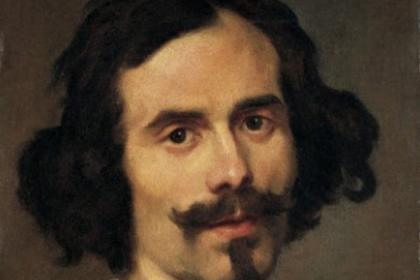
I maestri dell’arte - Itinerari romani sulle tracce dei grandi artisti
 Condividi
Condividi
The heart of Rome: Piazza Navona and Campo de' Fiori
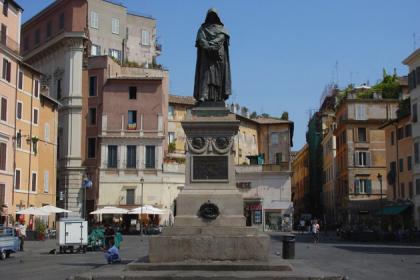
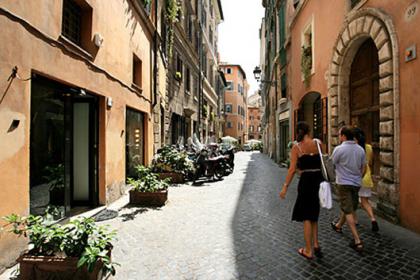
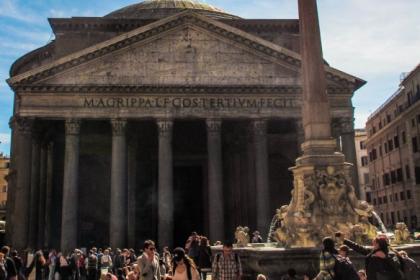
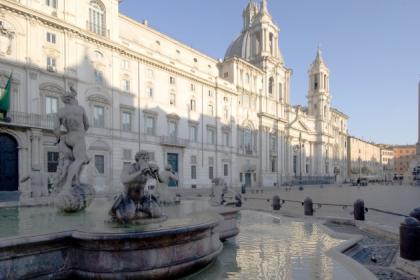
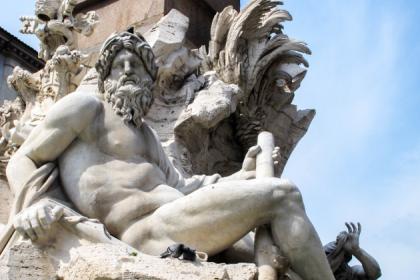
 Condividi
Condividi
Seven Nativity artworks: a gaze at the sacred heart of Rome
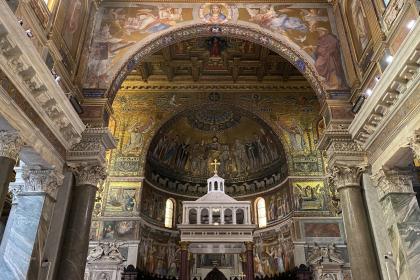
The Basilica of Santa Maria in Aracoeli
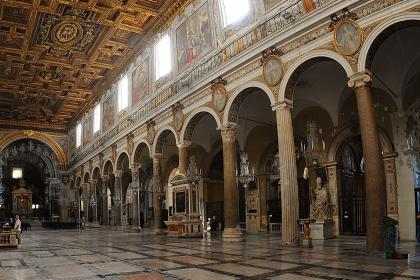
 Condividi
Condividi
New Year's Day lunch: stories, anecdotes and recipes of the Roman tradition

The Roman Pangiallo, the icing on the cake
